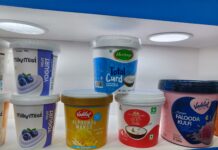At the interpack Mumbai roadshow on 10 November at the Jio World Convention Centre, senior leaders from Messe Düsseldorf and the German Engineering Federation (VDMA) presented a detailed assessment of the global packaging, processing and machinery landscape, highlighting demographic pressures, regulatory challenges, shifting geopolitical dynamics and India’s rising significance in global manufacturing. interpack will take place from 7 to 13 May, 2026.
Thomas Dohse, project director for portfolio processing and packaging at Messe Düsseldorf, opened the session by underscoring the essential role of packaging in an increasingly complex world. With global population growth, rapid urbanization and rising consumption of food, pharmaceuticals and consumer goods, he said the packaging and processing industry is under mounting pressure to innovate and adapt to modern supply chain needs.
Using Mumbai as an example of extreme urban density, he contrasted the city’s scale with that of his home state of North Rhine-Westphalia to illustrate how demographic shifts, expanding megacities, higher employment and evolving lifestyles are reshaping market demands. These changes, he noted, are creating opportunities for technological advancement while simultaneously elevating expectations for speed, efficiency and sustainability.
Dohse also drew attention to tightening global regulations and geopolitical headwinds that are complicating operations for manufacturers and brand owners. Europe’s Packaging and Packaging Waste Regulation, comparable rules emerging in the United States and new frameworks in countries such as India require companies to remain agile. Resource constraints, fragile supply chains and global conflicts—including the Russia–Ukraine war, instability in the Middle East and US trade tariff pressures—add further unpredictability to business planning.
Turning to interpack itself, Dohse described the Düsseldorf show as the world’s most influential platform for the processing and packaging industries. The exhibition spans an area comparable to the Louvre museum complex and covers about 40 football fields, requiring visitors to spend several days to explore its full breadth. Fully booked with a long waiting list, interpack expects around 2,800 exhibitors from more than 60 countries in its next edition.
He highlighted interpack’s unique strength in attracting global decision-makers, with more than 70% of visitors arriving from outside Germany. For exhibitors, the triennial show serves as the primary stage for unveiling new technologies, including full-scale machinery. The materials segment alone represents roughly 1,000 exhibitors, making interpack the largest global event for packaging materials. Since its launch in 1958, Dohse said, the event has built unmatched trust and cross-industry synergies spanning food, beverage, bakery, pharmaceuticals, cosmetics and industrial applications.
Dohse then introduced Richard Clemens, managing director of the Process Plant and Equipment Association within VDMA, who provided updated data and a deeper analysis of global market trends.
Clemens began by noting his long association with India, having co-founded VDMA’s first overseas office in the country 36 years ago. He reiterated India’s strategic importance for mechanical engineering and capital investment across customer industries, including food, beverage, packaging and pharmaceuticals.
Presenting a structured view of the global landscape, Clemens said the packaging market remains resilient and is poised to grow by around 11% over the next five years. Mature markets such as North America, Central Europe and Japan are expected to expand at around 6%, while developing regions will grow far more rapidly—Asia by roughly 9%, South America at a similar pace and Africa by as much as 20%, driven by young populations and rising consumption.
He also highlighted the rapid expansion of global pharmaceutical production. Since 2019, output has grown by 29%, partly due to pandemic-induced investment. Citing Euromonitor data, he said the sector is expected to grow another 24% in the next five years to reach a global value of 2.3bn Euros.
Plastics continue to dominate packaging materials, accounting for around 65% of all packaged goods across food, non-food and pharmaceutical sectors. While demand remains robust, Clemens pointed to rising regulatory and consumer pressure—particularly in Western Europe—to improve recyclability, reduce waste and transition to more sustainable materials.
Discussing the global machinery market, he said exports now exceed €240bn. Germany and Italy traditionally contend for the top exporter position, but China has rapidly climbed into third place after being outside the top 15 just 15 years ago. He emphasized, however, that export data alone does not reflect the significant machinery volumes produced within developing markets by European, American, and other global manufacturers.
This trend is especially visible in India, where major German and Italian companies have expanded manufacturing capacity around Bengaluru, Maharashtra and other industrial centers. Clemens said these factories now match European facilities in technical capability and supply equipment to global markets, marking a turning point after years of hesitation among European firms.
He added that packaged food sales in India continue to surge, growing by an estimated 33%. Although export figures show strong shipments of food processing and packaging machinery to India, they do not capture the growing volumes produced domestically by international companies with local operations. This shift underscores India’s dual role as both a major consumer market and an increasingly important manufacturing base within the global machinery ecosystem.
Clemens concluded by linking these developments to the themes expected to define Interpack 2026: sustainability, innovation, globalized manufacturing and continuous evolution in materials and machinery.












